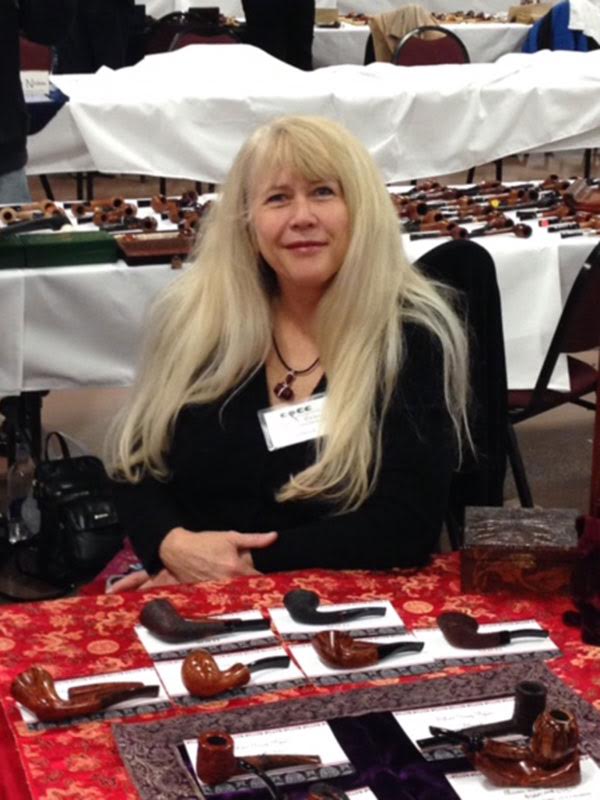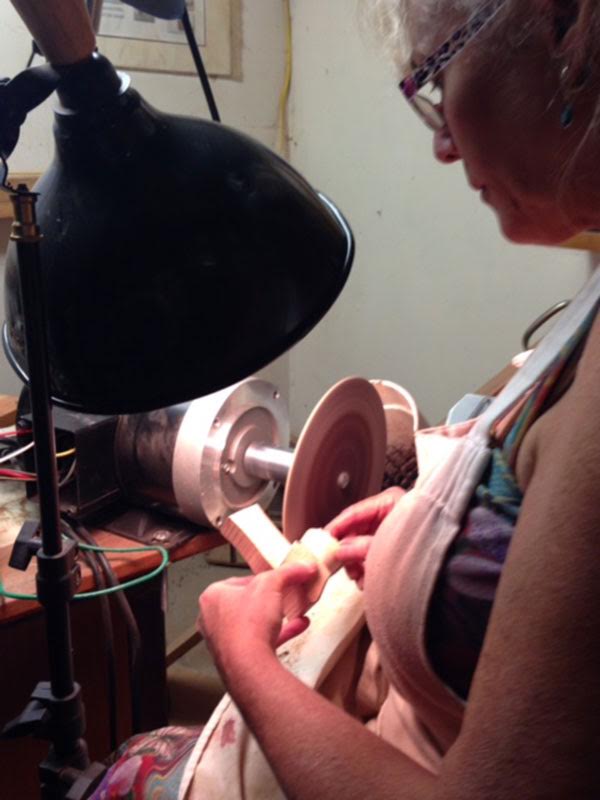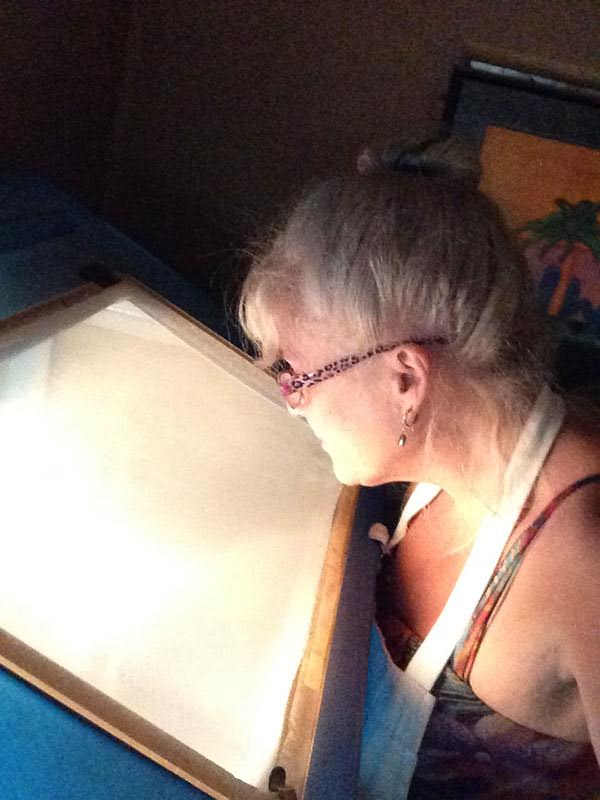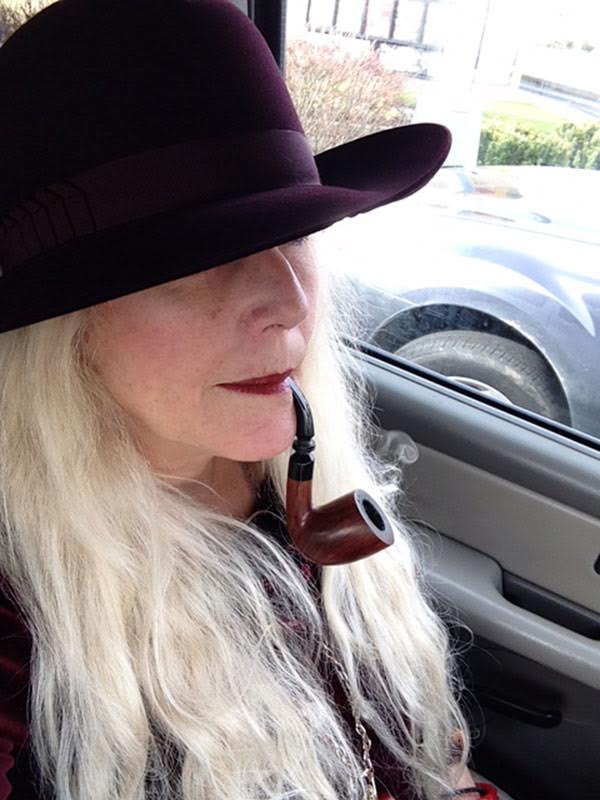Introducing Silver Gray Pipes: An artist and her process [Interview]
Posted by Renia Carsillo on 1st Sep 2016
Silver Gray Pipes are an exciting addition to our site. Particularly for me. Silver Gray is the first female pipe maker to join our TobaccoPipes.com family.
I’ve been interviewing pipe makers and collectors on this site for three years now. Every interview is unique. But one thing is always the same: The moment when someone asks me what it’s like to be a woman in this field. With Silver, she already knows and knows better than I ever will.
If you will forgive me this turn of phrase, she sparkles in a big way.
Silver speaks openly about the physical demands of pipe making. She talks about the balance that must be struck between family and art. These are real moments that I’m sure every pipe maker bumps up against. She presents a pragmatic understanding of what her work takes. It beautifully compliments her obvious passion.
Silver told me that one of the most beautiful aspects of working with briar is how limited this moment is for her. As a woman who’s raised four children and already enjoyed a successful career, she knows her time as a pipe maker is limited. This knowledge makes every piece a treasure, every moment a gift. Silver’s heart-shaped mark on each of her pipes is more than a symbol. It’s a literal translation of what she knows: that a piece of her soul lives in each pipe off her bench.
What follows are my favorite moments from my conversation with Silver.
(Want more from Silver Gray? Listen to her on The Pipe's Magazine Radio Show #208)
A Conversation with Silver Gray

Renia: How did you get into pipe smoking?
Silver: When I was 16, my family moved from Alaska to Maine. A friend gave me a little Meerschaum pipe and a pouch of tobacco as a going away gift. I smoked it for about six weeks, until I ran out of tobacco. Since I couldn’t buy anymore, I put it aside and didn’t think much about pipes for another 20 years.
When I picked up a pipe again, as an adult, I found that it fit my style and sensibility well, just as it had years before. I’ve been smoking my pipes ever since.
Renia: What motivated you to start making your own? How did you get started?
Silver: I’ve been an artist all my life. In high school, I started working with clay and became known in my circle for creating with large vessels and pots. Later I took up quilting. Working with my hands is as natural to me as breathing.
About 3.5 years ago I ran into Brad Pohlmann and he invited me to visit his workshop. I figured, “Well it can’t be that hard to make a pipe.” I’m good at replicating things that I see. I was already an artist. It didn’t seem that hard to transition to working with wood. When I visited Brad, I made my first pipe and realized how wrong I was about that!
Once I realized how much work I had to do, I was afraid of wasting good briar. I started learning how to use the shaping wheel by making hearts out of Brad’s scraps. For awhile all I did was rip up my fingers, but after a time I learned how to follow the shape of the wood. Once I understood that piece, I was ready to move back into pipes.
At first, I took Brad’s scrap pipes -- ones that he would never finish -- and finished them for myself. Using his discarded pieces was an efficient way to learn the way of the wood in small steps, before diving in from scratch. I still smoke some of those pipes today.
I’ve been apprenticing under Brad for the past three years and feel like I’ve developed a voice of my own over time. We still have that first pipe I made up on a shelf. It reminds me to stay humble and of how far I have come.
Renia: It sounds like you have an artist’s eye, so from that perspective, what do you think makes a good pipe?
Silver: Balance and draw are paramount, but for me aesthetic is equally important. Handfeel matters to me and I want a pipe to be beautiful too.
Working with Brad continues to teach me about engineering. The pipe has to be drilled right. If it isn’t the artistry doesn’t matter. A tobacco pipe isn’t made to sit on a shelf.

Renia: Do you have a favorite pipe that you’ve made or own?
Silver: Well all my pipes are my babies. But I have a little Savinelli that I love and cherish.
Recently, Brad and I decided to make each other pipes. I made him an Eskimo Egg and he made me an elegant squashed tomato. It's really beautiful and smokes like a dream! I think that one's my new favorite.
Renia: What other carvers and/or artist influence your work?
Silver: Of course Brad. Beyond my close work with him, I draw from everyone for creative inspiration. I have pipe shape books that I look through. I peruse the internet, and if something strikes me I draw from that and pair it with sketches I’ve already done. Sometimes I see a stem that I like and pair it with a different bowl. Sometimes I’ll just have a spark of an idea and keep sketching on it until I come up with something I love. Inspiration comes from everywhere.
Regarding other pipe makers, I adore Tom Eltang. I draw a fair bit from the Germans and their avant-garde shapes. Of course, the Ivarssons. The hexagon shank I do is a draw from Sixten Ivarsson’s aesthetic.
One of my favorite forms of “research” is reviewing the old masters, especially the Danish influence. I have Danish ancestry, so I’m sort of partial.
I drink it all up, all the genius that came before me. I want to know things, to understand how a certain line happened or how I can achieve a particular curve.

Renia: I love that! Artists are, at least in my opinion, observers first. It seems like you’re really open to the world. It sounds like you spend a fair bit of time developing your ideas. What does your process look like?
Silver: I dream about pipes sometimes. Does that count as process?
Usually I begin with a spark of inspiration. I choose a design I enjoy. For example, I have a Yachtsman that I love. For Chicago this past year, I decided to do one. It’s not a popular shape, but it was the first pipe I sold there. I think following what moves you shows up in the work and it draws others in.
When I’m starting a new piece, I sketch to see what comes of it. This helps me see the proportions and make sure I have the visual balance right. Once I have a rough sketch, I rough carve the pipe. Then I drill.
Before I finish the shaping, I figure out what I’m going to use for the stem and make it, even though the pipe isn’t complete. I do it this way because I’ve learned from past experiences. Nothing’s worse than carving down to far at the end and realizing I’ve got a stem and a pipe that don’t really go together.
At this point, I can bring the whole thing together and think of the pipe as one whole piece. I can see the finished product in my mind as I’m shaping.
I tend to be a glutton, when it comes to my work. I always have lots of different pieces going at once. Right now I have three or four going. Having pieces at different stages allows me to do the work that moves me on any given day. I don’t like to do the exact same thing every day. Yesterday Brad had to massage my whole arm because I spent so long stem-shaping. I try to avoid that. I like variety.
Renia: Besides Brad, do you have any other mentors who have helped develop your process?
Silver: Out here in Southern Oregon we’re kind of isolated. It’s rare to find another pipe smoker, much less a pipe maker. The only one near us is Jerry Crawford. He used to be out in Phoenix. When he moved here, we shared our shop with him for a bit and it was a great opportunity to see someone else’s perspective. He’s so patient and kind.

Renia: Where is your workshop and what rituals do you have while you work?
Silver: Our shop is the original house on the property we live on. It has seven rooms including the garage. When I met Brad, I was just using it for storage. When we decided to turn it into a shop, I was able to make it exactly how I wanted and design everything. We put in new electric and gave each one of five rooms its own roll. We have a groom for shipping, one for finishing, one for blasting. We have the air compressor and dust collector in the garage. It’s nice to have everything separated by walls, but the space is small.
We crank out music on Pandora all day. Our favorite ritual is our Rolling Stones rule. When “Give Me Shelter” comes on it’s time for a mandatory dance break.
We like to work a regular-ish workday. Brad used to work in the middle of the night, but I just can’t do that. I have teenagers at home still. I don’t really want to work that way. It’s been beneficial to creating a process to have some structure around it. I can’t just sit and stare at my pipes for hours and not work. I have to jump right in. Sometimes that means fatal consequences, but most of the time it’s a strength.

Renia: That sounds like an incredible work day. Do you ever get frustrated with your work? What’s the most frustrating thing about making pipes?
Silver: All the time! Stems are my nemesis. I’m getting faster, but one mistake and you’re toast.
These days I’m not throwing stuff against the wall anymore. I don’t storm out of the shop and swear off pipes like I used to. But we run an old lathe that tends to eat stems. That can make me see stars.
You asked about the frustrating part, but I would rather give you the other side of that coin. The most fun part of making a pipe is the staining process. It’s the culmination of all your efforts. It’s the magic moment where hopefully I think, “Wow! I made this?!” It’s an “OMG” moment for me every single time. That moment is the most exciting thing ever.
Making a pipe is sort of like pregnancy, you wait nine months and then you have a baby. The great thing about pipes, is that you don’t have to wait 18 years to see how it will turn out.
Overall, making pipes with Brad has changed my life! Not only have I developed a new and exciting skill, it has given me the opportunity to meet some of the nicest people on earth!

![Introducing Silver Gray Pipes: An artist and her process [Interview] Introducing Silver Gray Pipes: An artist and her process [Interview]](https://cdn11.bigcommerce.com/s-d814b/images/stencil/460x250/uploaded_images/pipe-maker-interviews.jpg?t=1472673005)